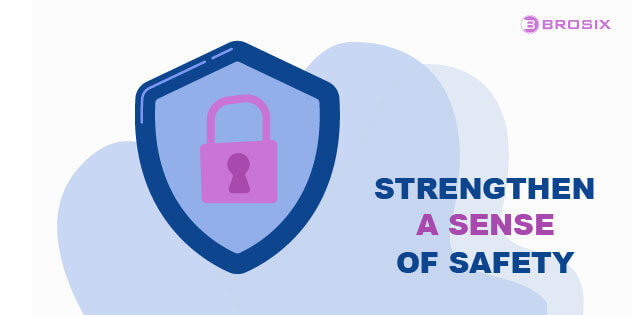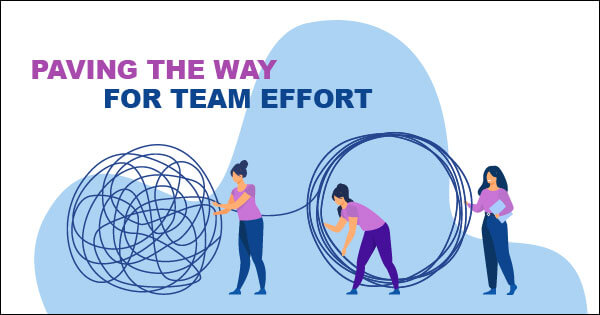They say teamwork makes the dream work.
It might sound like a cliché, but there’s endless evidence out there demonstrating the value of collaboration. In fact, about 75% of employees say teamwork and collaboration are absolutely essential to them, and the success of the businesses they work for.
When complex challenges emerge in any business, cultivating a “team effort” can be an excellent way to find creative solutions, fast. At the same time, building a culture of collaboration within your organization is a brilliant way to boost overall productivity and performance.
When team members play off each other’s strengths, they naturally accomplish more in just about any project. Today, we’re going to define what exactly “team effort” is, and share some of the ways you can encourage a better team dynamic in your business.
Team Effort Meaning: What is Team Effort?
“Alone we can do so little, together we can do so much”.
Team effort is a common concept in the business world, but it’s something many leaders and employees still don’t fully understand. Successfully generating team effort requires more than just putting people together in a room and asking them to collaborate on a project.
Team effort combines collaboration and cooperation, unifying everyone involved in a task around the same specific goals. Team effort involves everyone in a team actively contributing skills, ideas, and experience to a project. Everyone makes a cohesive effort to achieve the same common goal.
It might seem a simple concept, but in reality team effort can be extremely difficult to cultivate. In order to work effectively as a team, everyone needs to be equally invested in the task, have a clear vision of what they want to achieve and be able to communicate clearly and transparently.
What Does Team Effort Look Like?

In general, team effort involves a combination of excellent communication, cooperation and unity. It’s built on a foundation of shared beliefs, values and goals, which keep every employee on the same page, throughout any project or task.
For instance, when a sales team works together with a marketing group to create the best campaign for attracting and converting high-quality leads to a brand, that’s a team effort. When staff members across the business environment work together to resolve a problem or create a compelling piece of marketing content, that’s an example of team effort too.
Team effort often shines through in collaborative settings, where employees are empowered to work together more effectively. It doesn’t just refer to in-person environments, where executives get together and come up with strategies to grow the business. Team effort can happen anywhere. For instance, if all of your employees join forces during a brainstorming session over video chat, they’re all contributing to a team effort.
How to Cultivate and Enhance Team Effort
As mentioned above, while team effort can be extremely valuable, it can also be complex to cultivate and maintain. Various factors can detract from the synergy of a team. If your company is made up of employees with a host of different communication styles, for instance, they may struggle to work together effectively on projects.
If various groups in your organization are driven by different visions, this can detract from team effort too. For example, if a marketing team is focused on building awareness, while a sales team is concentrating on revenue, it can be difficult for those employees to align.
So, how do you cultivate and enhance team effort?
Step 1: Strengthen Team Alignment
Perhaps the first, and most important step in facilitating team effort, is ensuring all of your employees are on the same page. If staff members have different goals and visions that contradict each other, the workplace is more likely to become a competitive environment.
One study found that 97% of professionals agreed that a lack of team alignment directly impacts the outcome of a project. With this in mind, it’s crucial to ensure all of your employees have a shared goal to strive towards. Make it clear to every staff member what the priorities of your business are, and what they should be focusing on achieving with each project. Discuss goals, milestones and potential challenges with your entire team before starting any project.
Step 2: Strengthen a Sense of Safety

Team effort doesn’t just keep your employees in sync, it also empowers everyone to share their own unique perspectives and ideas in an environment that celebrates diversity. If your team members are concerned that their insights are going to be overlooked, or that they’ll be punished for sharing honest opinions, they’re less likely to contribute.
Creating a sense of psychological safety in your workplace means building a culture which allows everyone to feel as secure as possible when they’re contributing to a task. Encourage your staff members to share all of their thoughts and feelings relevant to a project throughout the workflow and never undermine anyone’s opinions or insights. Celebrate and reward people who are willing to think outside of the box and ensure that everyone in your team knows how to treat others with empathy.
Step 3: Dismantle Internal Silos
Internal silos are a common problem in today’s working world. Employees in different groups or sectors tend to form their own cliques, based on shared experiences and insights. However, to truly cultivate team effort you’ll need to find ways of breaking down these walls.
Make sure everyone in your workforce can communicate and share knowledge and ideas freely. There shouldn’t be a disconnect between your sales, marketing and product development teams. Everyone should have access to the same information, tools, and support. Actively look for ways to bring staff members from different environments together regularly.
For instance, you could consider hosting all-hands meetings on a channel like Brosix, where everyone can attend and interact with other members of staff. Brosix combines instant messaging with video and productivity tools to keep everyone in your workforce synchronized and on-task.
Step 4: Give Employees Clarity
Providing employees with clarity and direction is one of the best ways to cultivate team effort. This starts with simply ensuring that everyone in your team knows your company’s vision and mission. However, it’s also important to give every individual in your business an insight into how their work and contributions influence the entire organization.
One study found that when individuals in a workplace have a better understanding of their purpose within a business, they’re more likely to be productive and efficient in their role. When each team member knows what they contribute to the business they’re also more likely to be self-aware. In other words, they’ll understand that their efforts make a difference to the performance of other staff members.
Providing role clarity starts from the moment you onboard new employees into your workplace. However, it’s also worth making sure everyone in your company has a clear view of their role when they’re contributing to specific projects, with detailed briefs and guidelines.
Step 5: Empower Your Staff

Empowerment is another important concept in team effort. When teams are empowered, they have the confidence, capabilities and resources they need to contribute fully to a task or project. Although it’s helpful to give your team members plenty of direction, they also need to have the autonomy to make decisions themselves, and work independently.
Giving your staff members freedom to choose things like, how they communicate, when they get together to discuss project milestones, and so on, can help to make the team experience feel more natural. Allowing each member of your team to step up and act as a “leader” on a project when they have the right experience can be valuable too.
Furthermore, empower your staff with regular constructive feedback. Let them know when their efforts deliver positive results for the business, and offer advice when you feel they’re not performing as effectively as they could be.
Step 6: Encourage Accountability
Part of ensuring your business can thrive from team effort, involves making sure everyone in your team takes responsibility for their contributions. Being part of a team doesn’t just mean relying on other employees to pick up the slack when you don’t deliver according to expectations.
Every staff member should feel accountable for their own contributions, and should take responsibility for the results of their actions (positive or negative). Leaders in a business can encourage accountability in a variety of ways. First, it’s important to lead by example.
Leaders shouldn’t pass the responsibility of a failure over to other people in their organization. They should own up to their mistakes. It’s also worth encouraging employees to commit to projects by defining clear expectations and helping them to set their own personal goals for a task.
Additionally, rewarding those who perform well in certain projects can encourage accountability, by showing team members how they can benefit from delivering exceptional work.
Step 7: Strengthen Communications
Finally, exceptional team effort relies on a solid foundation of good communication. Your employees need to be able to regularly connect in a variety of different environments, so they can stay focused and aligned when working towards business goals. This is particularly important in today’s distributed workplace, where staff members don’t always have the opportunity to connect in person.
Ensure staff members have a range of ways to communicate with colleagues from all environments, using tools like Brosix for internal messaging, video and audio conversations. Keep staff members up to date with regular broadcasts and arrange meetings to bring people together on a regular basis.
Focus on helping your staff members to communicate as effectively and consistently as possible, and you’ll find that they’re more likely to work efficiently as a team.
Paving the Way for Team Effort

Team effort can be difficult to cultivate, particularly when you’re working with employees from multiple different cultures and environments, all with their own communication styles.
The good news is, when used correctly, team effort can generate a host of benefits.
It helps to build trust between team members, because everyone feels aligned around the same vision and ambitions. Team effort strengthens the bonds between employees, allowing them to rely on each other to achieve better results. Team effort also contributes to:
- Faster, more efficient teams: When multiple people work cohesively on a project, they’re more likely to achieve their goals quickly and effectively. Working together also teaches staff how their performance impacts the wider team and helps them to be more self-aware.
- Improved creativity: A collaborative workplace built on team effort allows people from different walks of life to share thoughts, ideas and perspectives. This enables creativity and innovation to thrive in the workplace.
- Enhanced development: Team effort encourages staff members to learn from each other, helping them to refine their strengths and overcome their weaknesses. Collaborative work is a learning opportunity which allows us to grow and expand our horizons.
Investing in team effort ensures your company can thrive as a cohesive whole, where every team member can contribute their best to the organization.
Remember, the right tools can make a huge difference to unifying your team.






